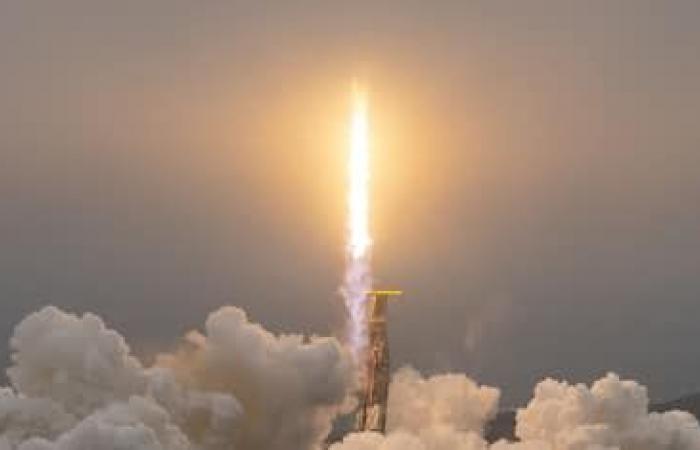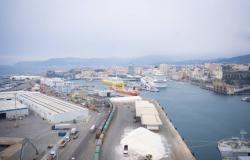Live in Space. Living in Space. The dream has an address in Long Beach, Southern California. Where we find a large warehouse with the writing Vast, an aerospace company founded two years ago by Jed McCaleb which aims to build the largest space station in the world in the name of a vision: a community of people who live, work, and perhaps one day will be born far from Earth. Word of Max Haot, its CEO, a digital entrepreneur devoted to space after a long time spent reflecting on the future of the human species and how to preserve the planet. His role model? Elon Musk, because, he explains to Sky Tg24, “with SpaceX he managed to build something that seemed impossible and paved the way for other entrepreneurs on the path to space exploration”.
The NASA race
In the vast hangar where we are welcomed, the atmosphere is that of work in progress and the constant noise of the machines. “We are builders of space stations – says Haot as he proudly shows us the model of Haven-1. “Our number one priority is to win the NASA contract to replace the International Space Station, which will be decommissioned by 2030. The program is called Commercial Leo (Low Earth Orbit) Destinations and foresees a winner by 2026 who will build commercial stations for NASA with national space agencies, industries and private citizens as potential customers. To make up for the gap in the competition and win, there were companies that were working on it even before we were founded, a year ago we announced the Haven-1 project: build and put into orbit a commercial station, let four astronauts live there for ten days and then have them return home, all by 2026. If we respect the times, I believe it will be very difficult for NASA not to choose us as a partner.”
Q: how do you think you will succeed?
“We are trying to do something never attempted before: a commercial space station five times cheaper and faster to build to launch into space in August 2025. Our partnership with SpaceX is fundamental. We will launch our station with their reusable Falcon 9 rocket. At first it will be unmanned, we will observe how it behaves for three months and then we will launch a manned Dragon shuttle with a second rocket which will reach Haven-1 and stay there for ten days. It will be the first of four expeditions spread over three years, the time Haven-1 will remain in orbit.”
in-depth analysis
Space X, new Starship launch successful
A space society
Q: Do you think we can already define ourselves as a space society?
“Since the launch of Sputnik in the late 1950s, we have developed technology that allows us to escape gravity and stay in space. Then in 1961 we had Gagarin, the first man in space, and in 1969 there was the moon landing. These were the first stages that made us a space civilization, although we later slowed down, continuing to make progress regarding satellites and space station, but falling far behind the initial plans from a Moon exploration point of view and Mars. In the meantime, it is no longer just governments that are leading the space industry, private individuals have entered the field and today we are working to return to the Moon and stay there, with the hope of one day arriving on Mars. At the same time we build trading posts and if we find a way to do it cheaper, more sustainably, faster and more profitably, well that’s why companies like ours exist.”
The future according to Vast
Q: Who are your potential customers and what kind of astronauts are you looking for?
“For the next decades the greatest costs of going into space will be transport, therefore rockets and capsules. By combining SpaceX’s effort with Starship with ours, we hope to bring them down so that everyone can, if they want, live and work in orbit. If we look at what this market is today, the largest customer obviously remains NASA and for this reason we hope to be the winners of their 2026 tender. Then there are other potential customers, represented by all those countries with which we collaborate, including which Italy, and which intend to send professional astronauts into low orbit and beyond in the future, therefore their national space agencies. Finally, there are two more emerging segments. The first is that of private individuals, who interest us to the extent that they have research and exploration at heart, we do not like the term space tourist, individuals who perhaps have amassed a large fortune and decide to invest part of it to go in orbit to do science and awareness campaigns for space activities. The last segment should become that of in-orbit manufacturing. At the moment, a lot of research is being done in space on materials that are then used on Earth, but we are in a moment in which technological advances and experiments, especially in the pharmaceutical and microelectronics sectors, could soon allow us to transform entire space stations into small factories for products that are important on Earth.”
Q: How will you ensure low costs and sustainability?
“If we look at Haven-1, there is nothing innovative compared to what individual governments have done in the past with the International Space Station. It’s a small station, with a significant volume, about five times that of a Dragon capsule, but aside from the connectivity we’re trying to provide using SpaceX’s Starlink constellation, it’s something that’s already been done. The real innovation is being able to do it cheaper and faster than anyone before us. If you plan to build a space station in two years instead of ten, the costs will be reduced by up to five times: this is the key. Do it first, in an agile way, with a commercial approach and with the right astronauts and eventually it will become something profitable.”
in-depth analysis
EarthCare and the launcher war
A return ticket to space
Q: Can you tell us how much one of your tickets will cost?
“We can’t reveal it yet, but by browsing online you can get an idea of how much it costs to board a Dragon capsule and how much individual space agencies spend to send astronauts on board the ISS. We are halfway between the two, we will have an extra cost if you decide to stay on board our station and not only on board the Dragon, which will remain attached to Haven-1 for the entire duration of the individual missions, but it will still be a lower cost than to that of flying aboard the ISS”.
Before leaving us, Max Haot guides us inside the Pathfinder module where we conducted the interview, showing us the door to which the Dragon shuttle will dock and through which the astronauts will pass. It looks like a scene from 2001 A Space Odyssey, the film by Stanley Kubrick who in 1968 imagined a huge rotating spaceship capable of producing artificial gravity. And then, thanks to the images of my colleague Dennis Alberti, for a moment space seems closer.






